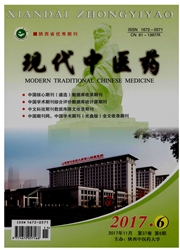

 中文摘要:
中文摘要:
目的:探讨颈动脉内膜剥脱术(CEA)的三重麻醉方法的效果。方法:对58例颈动脉重度狭窄的患者实施CEA采用全麻、颈丛神经阻滞和颈动脉窦浸润复合三重麻醉的方法。在病变侧行颈丛神经阻滞,全麻诱导,安氟醚吸入麻醉,术中局麻药浸润颈动脉窦,间断注射芬太尼和维库溴铵维持麻醉。结果:颈动脉阻断时间平均为(28.3±3.5)min,术后1例出现谵妄,5例出现高血压,对症处理后,均康复出院。结论:全麻、颈丛神经阻滞和颈动脉窦浸润复合三重麻醉方法应用于CEA是比较安全的麻醉方法,术中血流动力学和生命体征均平稳。
 英文摘要:
英文摘要:
To investigate the effect of carotid endarterectomy under triple anesthesia method. Method: 58 cases of severe carotid stenosis patients undergoing carotid endarterectomy were under general anesthesia and cervical plexus block combined with Carotid sinus infiltration anesthesia;Cervical plexus block in the side of the lesion line, Induction of general anesthesia, Enfiurane inhalation anesthesia, during the operation , anesthetic infiltration of the carotid sinus, Anesthe- sia was maintained with intermittent injections of Fentanyl and Vecuronium. Result: The blocking time of carotid in average is (28.3 -+ 3.5) min, after operation, one case appears delirium, 5 cases appear hypertension, after symptomatic treatment, they were all recovered and discharged. Conclusion: The triple anesthesia method, general anesthesia and cervical plexus block and carotid sinus infiltration used in CEA, is a relatively safe method of anesthesia. The intraoperative hemodynamic and vital signs were stable.
 同期刊论文项目
同期刊论文项目
 同项目期刊论文
同项目期刊论文
 期刊信息
期刊信息
